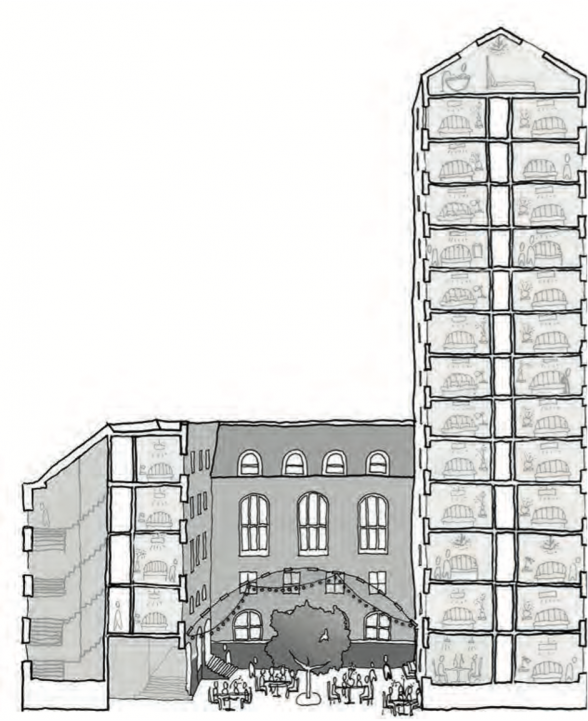This website uses cookies
This website uses cookies to enable it to function properly and to analyse how the website is used. Please click 'Close' to accept and continue using the website.



Sensitive ideas for conversion into a hotel
Back in 2017 we were deeply pessimistic about a very fine building. Wood Street Police Station (Grade II*) in the City of London is one of McMorran and Whitby’s masterpieces of classically inspired post-war design; it’s on the cover of the book about them in our 20th Century Architects series.
However, despite our best efforts, listed building consent was granted for a bad scheme which included a large and clumsy extension, attached all the way up the existing tower. My predecessor, Tess Pinto, said this was ‘not only a scandal in itself’, but undermined the entire system of statutory protection for historic buildings. Historic England did not help matters when it said that the proposals would constitute ‘less than substantial harm’ (essentially code for a local authority to feel free to grant consent). We backed off at this point, as, even if we’d had the resources to push the case further, we felt we would inevitably be accused of impeding critical efforts to counter terrorism. But we never accept defeat until a building is demolished or irrevocably altered.
Luckily, the City of London Police have since abandoned the approved plans. Rather than trying to squeeze more staff onto the Wood Street site, they have opted to join the City’s County and Magistrates Courts in commissioning Eric Parry to design a new combined police and justice complex in Fleet Street. With Wood Street station now likely to be redundant within a few years, we were eager to encourage a fresh approach when deciding its future.
Hotel conversion quickly emerged as an option with several advantages. It avoids harmful extensions, and if done sensitively would protect the building’s character, working well with its original layout. It also makes financial sense given the location, and would give many people the chance to enjoy the architecture.
The Society is fortunate to have the support of the visualisation specialists at Assael Architecture, a firm which has just completed a hotel conversion scheme with an innovative operator as the client. By coincidence this was another McMorran-designed building: Greenwich Police Station and Section House (Farquharson and McMorran, 1939, not listed). Drawing on this experience and following our key parameters, Assael have now drawn up a scheme showing that Wood Street has the potential to be a distinctive and desirable boutique hotel.
Assael’s study shows that the tower, which previously contained offices and staff accommodation, could house eight or nine bedrooms per floor with additional ‘penthouse’ rooms within the existing roof profile. The quad-shaped main block, which originally included stables and cells, could house function spaces, meeting rooms, bar and restaurant, and further hotel rooms, while a spa and gym could be added in the basement. A glass roof could also be added to the central courtyard to create a new events space. In total, roughly 163 rooms and all these extra facilities could be provided within the building’s existing footprint, a similar capacity to the Greenwich scheme.
In most cases the Society recommends that a building’s original purpose continues if possible, as this is usually the best way of sustaining its character and special qualities. Sometimes, however, changing functional requirements may mean that a different use is a kinder option. Hotel conversion offers a new lease of life for many building types, another recent example being the Camden Town Hall Annexe (Camden Architects Department, 1977). This precast concrete building opposite St Pancras Station was not listed, but was nevertheless a fine example of brutalist design. Of the various schemes submitted after Camden announced that the building was to be redeveloped, all but one assumed that demolition was the solution. Thankfully the chosen scheme (by Orms Architects) recognised the building’s positive qualities, as well as its potential to become a cool design-led venue. The hotel, which is about to open, has already received positive publicity focusing on the innovative reuse of an under-appreciated building.
We are grateful to Assael for offering to put together outline schemes such as this one for Wood Street. Having the drawings to illustrate our ideas is invaluable when we are trying to encourage creative thinking for buildings with uncertain futures.
Grace Etherington

Credit: Assael Architecture

Become a C20 member today and help save our modern design heritage.